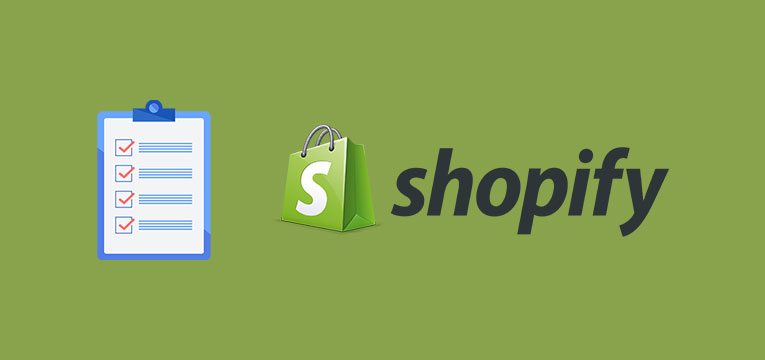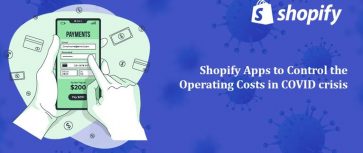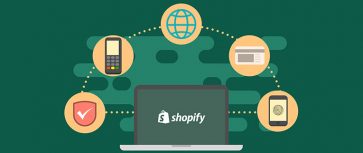Shopify Development Checklist for Launching Your Online Store
So, you have finally decided to launch an eCommerce store. Great! To get started smoothly, choosing a reliable eCommerce platform is very crucial. And nothing works better than having a strong yet adaptable store builder that can increase conversions and sales simultaneously like Shopify. Creating an eCommerce store is a journey full of excitement, but it also can be overwhelming at times. Here I would like to guide you on what it takes to have a smooth launch day.
About Shopify
Shopify is recommended for the stores that sell goods or services requiring no or a minimal amount of configuration. All you have to do is implement an advanced Shopify homepage section and see how it increases your ROI and boosts your business revenue. Let us further see how the platform benefits you for creating an online store for your business?
Easy to setup & use – Even if you are a non-techie or have not connected a reliable Shopify development company like eTatvaSoft yet, Shopify is the best plug and play solution to take into account. With more than hundreds and thousands of mobile-ready storefront templates available around, building an attractive eCommerce store becomes easy. As you move further exploring the platform, you will find a bunch of free and paid themes featuring different customization options.
Another easy option is to choose our team of Shopify developers who are skilled enough to make your Shopify store launched in no time by populating your content.
Security – With a plethora of security breaches happening around. It becomes very crucial to choose a platform that offers security and reliability to a great extent. Having a store that takes a lot of dealing with confidential, personal, and financial information that is supposed to be present online is not easy. We offer Shopify development services that take care of all such aspects like upgrades, maintenance, and security. Being a global hosted service, people are monitoring their network 24/7 for any attacks and can help you deal with any problems that arise.
Marketing & SEO benefits – Another major benefit of using Shopify is its effectiveness of SEO. Having a wide range of SEO functionalities such as the capacity to alter meta tags, add necessary tags, and place collections, products and descriptions in an SEO friendly way in the browser. If simply put, Shopify gives the storekeeper positively to streamline the site’s substance – yet you have to have a little expertise or some comprehension of SEO to make the most of it.
Mobile responsiveness – Everybody is going mobile. Mobile responsiveness is the key to the success of an e-commerce store because the number of mobile shoppers is increasing by the day. The Shopify themes are mobile responsive, which means that it can be used to avail mobile-optimized stores. There are even free iPhone and Android apps that can be used to manage the store.
Cross-channel Selling – Many businesses take this as a new concept but it is not! Shopify has made its route simpler to sell items over a wide scope of channels and stages. All you have to do is use the Shopify Facebook app. This is not it! In Shopify development, it even offers abilities to sell on different stages, for example, Twitter, Pinterest, Houze thus more.
Before Launching your Shopify Store
At this point, you more likely than not comprehended the way that Shopify has gotten one of the most famous go-to tools for businesses that are looking forward to anticipating growing their digital space.
Ironically; all the angles which make Shopify so basic are actually what makes it tricky. We are talking about the unrivaled flexibility it offers. Shopify isn’t a single tool; it’s a completely adaptable arrangement of an immense assortment of building obstructs that come in a wide range of shapes and sizes. So how would you know which of these structure squares are ideal, and how might you ensure you don’t disregard a fundamental part?
Make a Shopify development Checklist
- Know Your Customer
First and foremost step towards building an eCommerce website through knowing where your customers are. According to researches, it has been proved that multi-channel retail is quite on the rise these days. Consumers no longer purchase through one website; they browse – compare and then end up purchasing the needy product.
This platform can be used for identifying right sales channels along with target demographics. And the best part is Shopify includes a wide range of social selling options such as Pinterest and Facebook.
After knowing where your customers are, it’s time you need to understand what they want. Think about the overall customer experience and try to match customer needs with some of the available Shopify’s apps
- Know all the Shopify product listing features
Now I am pretty sure before launching an eCommerce store, you must be having around 10-15 products lined up. So make sure you upload all these products with attention. According to our Shopify developers, make sure your images are of good quality and well-optimized for fast loading, clear product descriptions, the usage of categories called “collections”.
On and all, a well-published product page that allows you to add products in a faster manner is all it needs!
- Incorporating brand image is important
Many retailers consider Shopify development as a major issue. They strongly feel that the finished product looks more like a Shopify website itself. Well, it’s not the association with Shopify rather the lack of association with your brand. In the Accenture Global Consumer Pulse Survey, it was found that one of the major turns off for online shoppers websites was the inconsistent experience gained from one channel to another. Therefore, we recommend incorporating all the potential aspects of your brand so that constant message and association is done. How you may ask?
- Create custom domains
- Use your own brand’s colors and font
- Add your logo
- How do you communicate?
Have you ever come across terms such as touchpoints? They are extremely important leading to nurturing and maintaining customer relationships. Shopify is the platform where admin can optimize email newsletters, confirmation and dispatch emails. Also, the platform even reminds visitors regarding items in their abandoned cart. Another interesting part to take into account is keeping your audiences in a loop in regards to tracking the status of their order easily online.
However, Order confirmation emails is not only communication channel with customers. Shopify has a brilliant live chat support feature called Shopify ping which can be used.
- Collect Customer Feedback
Choose our Shopify development services and we assure you that your project will be up and running in no time. But is this enough? Certainly not, we require to know whether our customers are happy with the buying experience or not? Simply ask them out! Collect as many customer feedback as you can! This will give you tons of valuable information about what you’re doing well, and where are your opportunities to improve.
Right from branded post-purchase surveys to on-page pop-up surveys, ask them from where did they know about you, what best describes you, how was their shopping experience, and whatnot!
- Manage Landing pages
Many of you often get baffled between landing pages and product pages. Landing page can be defined as an end destination for shoppers coming from a specific Facebook ad, email campaign, or any display ad, targeted traffic. Landing pages are meant only to make a sale. According to Hubspot, creating custom landing pages enable companies to see a 55% average increase in leads.
For that, you don’t need to worry about hitting us every time. Our team of Shopify developers is well-versed with the library to offer you a custom page layout.
- Add your chosen sales channels
To grow a custom base, having more sales channels is extremely important. More than 70% of consumers use multiple channels to conduct a single purchase with a brand. eBay, Amazon, Instagram, Facebook shop, Google shopping, buy button, messenger, and Pinterest are some online sales channels worth taking into account.
Whichever sales channels you use, make sure you connect it with the core of your Shopify business. This will make you easily keep track of orders, products, and customers across all platforms.
- Dynamic Payment gateway settings
Driving a significant amount of traffic to your store is not just it! At the same time, you need to make sure that your customers can complete the purchase. It is wise to fix errors before making the new ones otherwise, you risk losing more sales.
For seamless payment, look out for these steps:
- Shipping rates surfaced during checkout
- Discount codes
- Familiar payment methods such as Paypal, shopPay
- A language and currency switcher
- Customers can track order status
- An email notification is sent to confirm a purchase
That’s all
I hope you enjoyed reading the Shopify development store launch checklist. Are you ready for the “go time”? Of course, there will always something to improve, change, or grow – but these tips will get you off to a solid start! You can even contact-us for Shopify Development service.
Find out more Shopify Blogs:
Build a Shopify App with Node.js
Shopify Multilevel Filter functionality using Product Type & Tags
Often considered as one of the best PHP frameworks around, Laravel enables us to cope with many known and unknown problems while creating a website....
 Jun 25, 2020
Jun 25, 2020 



What's up, after reading this awesome post i am as well happy to share my familiarity here with colleagues.
Great blog! Enlighten a beginner to set up an online store with Shopify that is a great intent. Shopify laced with many features to make your e-store full-fledged and fully optimized.